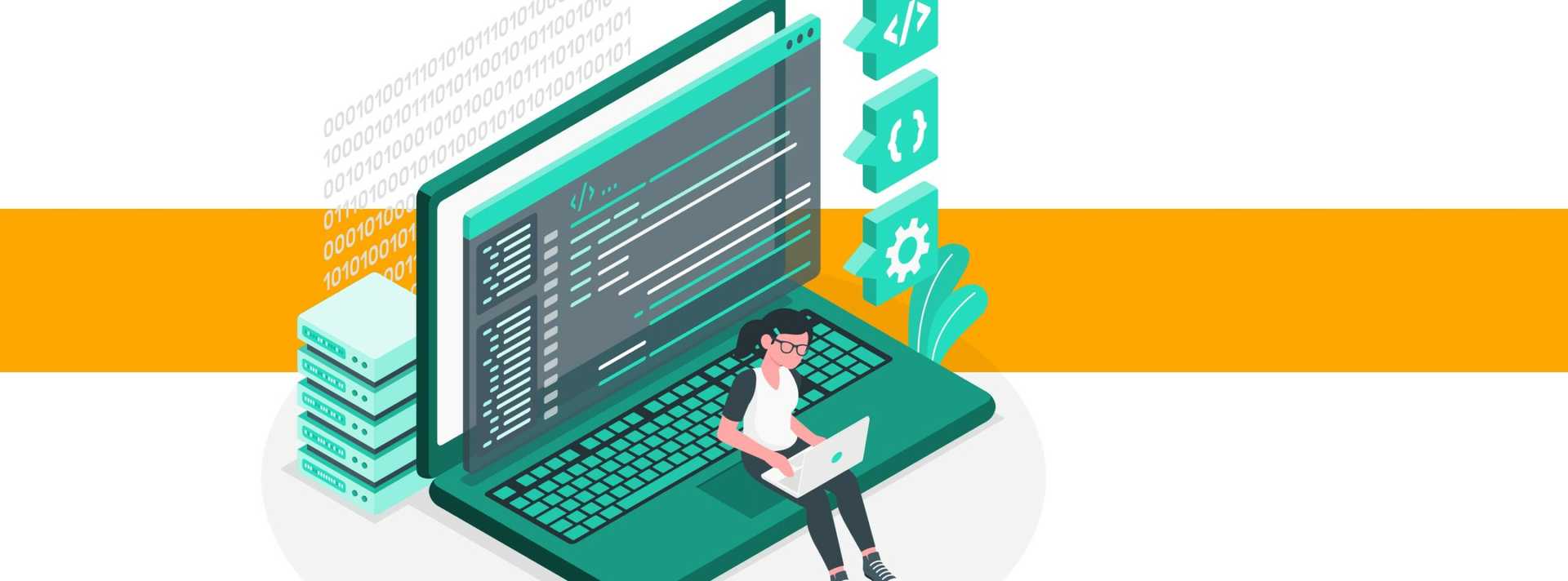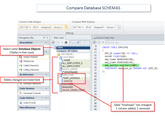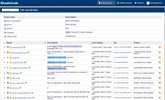
August 25, 2022
Code reviews are a type of software quality assurance activity that involves rigorous evaluations of code in order to identify bugs, improve code quality, and assist engineers in understanding the source code.
Implementing a systematic approach for human code reviews is one of the most effective ways to enhance software quality and security. Given the probability of mistakes during code authorship, using many fresh eyes with complementary knowledge may disclose flaws that the original programmer may have overlooked.
A successful peer review process requires a careful balance of well-established protocols and a non-threatening, collaborative atmosphere. Highly structured peer evaluations can hinder productivity, while lax approaches are frequently unsuccessful. Managers must find a happy medium that allows for fast and successful peer review while also encouraging open communication and information sharing among coworkers.
The Benefit/Importance of Code Reviews
The fundamental goal of code review is to guarantee that the codebase’s code health improves with time.
Code health is a “concept” used to measure if the codebase on which one or more developers are working is — manageable, readable, stable (or less error-prone), buildable, and testable.
Code reviews enhance code quality by detecting issues before they turn unmanageable, it ensures a consistent design and implementation and also assures consistency of standards. It contributes to the software’s maintainability and lifespan, resulting in sturdy software created from components for smooth integration and functioning. It is inevitable that adjustments will be required in the future, thus it is critical to consider who will be accountable for implementing such changes.
When source code is regularly reviewed, developers can learn dependable techniques and best practices, as well as provide better documentation, because some developers may be oblivious of optimization approaches that could be applicable to their code. The code review process allows these engineers to learn new skills and improve the efficiency of their code, and produce better software.
Another significant benefit of code reviews is that they make it easier for analysts and testers to comprehend. In Quality Assurance (QA) testing, testers must not only evaluate the code quality but also discover issues that contribute to bad test results. This can result in ongoing, needless development delays owing to further testing and rewriting.
Performing Code Reviews
Good code reviews should be the standard that we all strive towards. Here are some guidelines for establishing a successful code review to ensure high-quality and helpful reviews in the long run:
Use checklists
Every member of your team is quite likely to repeat the same mistakes because omissions are the most difficult to identify since it is hard to evaluate something that does not exist. Checklists are the most effective method for avoiding frequent errors and overcoming the challenges of omission detection. Checklists for code reviews can help team members understand the expectations for each type of review and can be beneficial for reporting and process development.
Set limits for review time and code lines checked
It might of course be very much tempting to rush through a review and expect someone else to detect the mistakes you omitted. However, a SmartBear study indicates a considerable decline in defect density at speeds quicker than 500 LOC per hour. The most effective code review is performed in a suitable quantity, at a slower speed, for a limited period of time.
Code review is vital, but it can also be a time-consuming as well as a painstaking process. As a result, it is critical to control how much time a reviewer or team spends on the specifics of each line of code. Best practices in this area include ensuring that team members do not spend more than an hour on code reviews and that the team does not examine more than a few hundred lines in a certain amount of hours.
In essence, it is strongly advised not to review for more than 60 minutes at a time, as studies suggest that taking pauses from a task over time can significantly increase work quality. More regular evaluations should lessen the need for a review of this length in the future.
Performing a security code review.
A security code review is a manual or automated method that assesses an application’s source code. Manual reviews examine the code’s style, intent, and functional output, whereas automated tools check for spacing or name errors and compare it to known standard functions. A security code review, the third sort of evaluation, examines the developer’s code for security resilience.
The goal of this examination is to identify any current security weaknesses or vulnerabilities. Among other things, code review searches for logic flaws, reviews spec implementation, and verifies style guidelines. However, it is also important that a developer should be able to write code in an environment that protects it against external attacks, that can have effects on everything from intellectual property theft to revenue loss to data loss. Limiting code access, ensuring robust encryption, and establishing Secrets Management to safeguard passwords and hardcodes from widespread dissemination are some examples.
Make sure pull requests are minimal and serve a single function.
Pull requests (PRs) are a typical way of requesting peer code evaluations. The PR triggered the review process when a developer completes an initial code modification. To improve the effectiveness and speed of manual code review, the developer should submit PRs with precise instructions for reviewers. The lengthier the review, the greater the danger that the reviewer may overlook the fundamental goal of the PR. In fact, a PR should be no more than 250 lines long because a study shows reviewers may find 70–90 percent of errors in under an hour.
Offer constructive feedback.
Giving constructive feedback are very essential as code reviews play very important roles in software development, however, it is also important to be constructive rather than critical or harsh in your feedback to maintain your team’s morale and ensure keep the team learns from the mistake.
Code review examples
The main outcome of a code review process is to increase efficiency. While these traditional methods of code review have worked in the past, you may be losing efficiency if you haven’t switched to a code review tool. A code review tool automates the process of code review so that a reviewer solely focuses on the code.
A code review tool integrates with your development cycle to initiate a code review before new code is merged into the main codebase. You can choose a tool that is compatible with your technology stack to seamlessly integrate it into your workflow.
A great example of code review, especially in Python, which is my favored language, would be dealing with Duck Typing, which is strongly recommended in Python to be more productive and adaptable. Emulating built-in Python types such as containers is a common use-case:
# Pythonic!
class DictLikeType:
def __init__(self, *args, **kwargs):
self.store = dict(*args, **kwargs)
def __getitem__(self, key):
return self.store[key]
...Full container protocol emulation involves the presence and effective implementation of several magic methods. This can become time-consuming and error-prone. A preferable approach is to build user containers on top of a respective abstract base class:
# Extra Pythonic!
class DictLikeType(collections.abc.MutableMapping):
def __init__(self, *args, **kwargs):
self.store = dict(*args, **kwargs)
def __getitem__(self, key):
return self.store[key]
...We would not only have to implement fewer magic methods, but the ABC harness would also verify that all necessary protocol methods were in place. This mitigates some of the inherent instability of dynamic typing.
Top code review tools for Developers
The fundamental purpose of a code review process, as described earlier in this article, is to enhance efficiency. While the traditional code review approaches outlined above have worked in the past (and continue to work), you may be losing efficiency if you haven’t switched to using a code review tool. A code review tool automates the code review process, freeing up the reviewer’s time to concentrate solely on the code.
Before adding new code to the main codebase, code review tools interact with your development cycle to initiate a code review. You should choose a tool that is compatible with your technological stack so that it can be readily integrated into your workflow. Here is a list of some of the top code review tools:
1. Github
You may have previously used forks and pull requests to evaluate code if you use GitHub to manage your Git repositories in the cloud.
Github also stands out due to it’s discussion feature during a pull request, with github you can analyze the difference, comment inline, and view the history of changes. You can also use the code review tool to resolve small Git conflicts through the web interface. To establish a more thorough procedure, GitHub even allows you to integrate with other review tools via its marketplace.
2. Crucible
Atlassian’s Crucible is a collaborative code review tool that lets you to examine code, discuss plan modifications, and find bugs across a variety of version control systems.
Crucible integrates well with other products in Atlassian’s ecosystem, including Confluence and Enterprise BitBucket. And, just like with any product that is encircled by other products in its ecosystem, combining Crucible with Jira, Atlassian’s Issue, and Project Tracker, will provide the greatest advantage. It allows you to do code reviews and audits on merged code prior to committing.
SmartBear Collaborator is a peer code and document review tool for development teams working on high-quality code projects. Collaborator allows teams to review design documents in addition to source code.
You can use Collaborator to see code changes, identify defects, and make comments on specific lines of code. You can also set review rules and automatic notifications to ensure that reviews are completed on time. It also allows for easy integration with multiple SCMs and IDEs such as Visual Studio and Eclipse amongst others.
4. Visual Expert
Visual Expert is an enterprise solution for code review specializing in database code. It has support for three platforms only: PowerBuilder, SQL Server, and Oracle PL/SQL. If you are using any other DBMS, you will not be able to integrate Visual Expert for code review.
Visual Expert spares no line of code from rigorous testing. The code review tool delivers a comprehensive analysis of code gathered from a customer’s preferred platform.
5. RhodeCode
Rhodecode is a secured, open-source enterprise source code management tool. It is a unified tool for Git, Subversion, and Mercurial. Its primary functions are team collaboration, repository management, and code security and authentication.
RhodeCode distinguishes itself by allowing teams to synchronize their work through commit code commentary, live code discussions, and sharing code snippets. Teams may also use coding tools to assign review jobs to the appropriate person, resulting in a more frictionless workflow for teams.
Conclusion
We learned what code review is and why it is crucial in the software life cycle in this tutorial. We also discussed best practices for reviewing code and the various approaches for doing so, as well as an example of a code review and lists of top code review tools to assist you get started reviewing code throughout your organization or team.
Recent Posts

August 27, 2025
How to Find the Right Learning Path When You’re Switching to a Tech Career
See post

August 22, 2025
Developer News This Week: AI Speed Trap, GitHub Copilot Agents, iOS 26 Beta Updates & More (Aug 22, 2025)
See post

August 08, 2025
Developer News This Week: GitHub GPT-5, VS Code 1.103 & Chrome 139 (Aug 8, 2025)
See post




